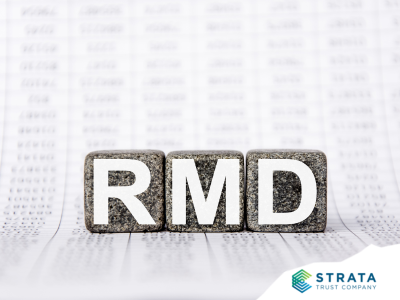As another year comes to a close, you may be wondering if your tax return will come with an income tax liability or a refund. You might still have time to make changes that would affect your tax obligations for this year, and you can be confident in your saving strategy as you start 2022.
Your tax professional is best suited to answer questions about your income tax liability, but while you wait for your tax appointment, you may want to talk to your financial advisor about your retirement savings goals and how you can benefit from pre-tax contributions in 2021 and in years to come. Some important questions to be considering:
- Did I take advantage of all the available tax breaks?
- Did I save enough to meet my retirement savings goals?
- Should I have saved in different types of accounts than I did?
- Is it too late to change anything for this tax year?
- Should I change anything for next year?
Saving in a Workplace Retirement Plan
One of the best ways to reduce your taxable income and meet your retirement savings goals is to maximize your pre-tax savings opportunities in a retirement plan sponsored by your employer, like a 401(k) plan. Deferring a portion of your paycheck into a workplace retirement plan allows you to delay paying income tax on that money and on the investment growth in your account until you take distributions, ideally when you’re in retirement and in a lower tax bracket. Pre-tax contributions enable you to receive an upfront tax benefit and to accumulate retirement savings on a tax-deferred basis.
When you save in an employer’s retirement plan, you must elect a percentage of your pay to defer into the plan (unless you were automatically enrolled). Your taxable income for the year will be reduced by the amount you defer into the plan, which can result in lowering your tax liability for the year. For 2021, you can save the following amounts from your earnings in a workplace retirement plan:
| Employer Plan Type | 2021 Deferral Limit | Age 50+ Catch-up Contribution | Total for 2021 |
| Simple IRA Plan | $13,500 | $3,000 | $16,500 |
| 401(k) Plan, 403(b) Plan, or Governmental 457(b) Plan | $19,500 | $6,500 | $26,000 |
If you work for more than one employer or are eligible to save in more than one plan, you have one limit of $19,500 for all SIMPLE IRA, 401(k), and 403(b) plans you participate in for the year. A governmental 457(b) plan has its own separate $19,500 limit.
Selecting a Pre-Tax Deferral Rate
Most employer plans allow you to change your deferral election throughout the year, so you can increase or decrease your deferral amount for upcoming paychecks. However, you cannot change your election retroactively – in other words, you cannot choose at the end of the year to contribute more or less than what has already been withheld from your paychecks.
Typically, financial advisors will recommend you defer at least enough into your employer’s retirement plan to receive the full employer matching contribution if one is made. From there, you’ll want to discuss your retirement savings goals with your financial advisor along with your investment strategy and other financial goals to determine exactly how much more to defer into your employer’s plan each year.
Saving in an Individual Retirement Account (IRA)
Many investors and their financial advisors factor IRA contributions into a retirement savings strategy because IRAs allow for a much broader variety of investment types than an employer plan. You can contribute up to the annual limit to a Traditional IRA if you have earned income, and to a Roth IRA if your income falls within certain limits. Participating in a retirement plan at work does not affect whether you are eligible to contribute to an IRA or how much you can contribute.
| IRA | 2021 Contribution Limit | Age 50+ Catch-Up Contribution | Total for 2021 |
| Traditional and/or Roth IRA in aggregate | $6,000 | $1,000 | $7,000 |
Participating in a retirement plan at work, however, will affect whether you can take a tax deduction for your Traditional IRA contribution. If you or your spouse do not participate in a retirement plan at work, you will probably be able to take a full deduction for your contribution. If you or your spouse do participate in a retirement plan at work, your ability to take the tax deduction will be phased out beginning at $66,000 for single taxpayers and $105,000 for married taxpayers in 2021. If you’re not eligible for a tax deduction, you can still make a non-deductible Traditional IRA contribution, or an after-tax Roth IRA contribution. (You can find the income limits for Traditional and Roth IRAs on the IRS website.)
If you reach the end of 2021 wishing you had saved more, you can contribute to an IRA for 2021 until April 15, 2022.
If you already made your 2021 IRA contribution to a Roth IRA but would benefit more from tax deduction available with a Traditional IRA, you can recharacterize the Roth contribution to your Traditional IRA and take the deduction for 2021 if you are eligible for a Traditional IRA. Alternatively, some taxpayers realize they are not eligible to deduct their Traditional IRA contribution and recharacterize to a Roth IRA. Either way, you have until October 15, 2022, to change your mind about your IRA contribution for 2021—so long as you file your taxes timely, including extensions.
Don’t Let a (Tax) Saving Opportunity Pass
Talk to your financial advisor about your retirement savings strategy and the variety of pre-tax savings options that can help reduce your taxable income. You also may be able to defer taxable income into a flexible savings account with your employer or make tax-deductible contributions to a health savings account (HSA). Make an appointment with your financial advisor to:
- Discuss your 2021 pre-tax retirement savings contributions to see if you missed any opportunities that you still have time to address
- Determine your long-term retirement savings strategy and retirement income goals
- Review the increases in tax-qualified savings limits for 2022 and the increases to the income phase-out ranges for Traditional and Roth IRAs
- Set your employer plan deferral election amount for 2022 (if your employer offers a plan) to maximize your retirement savings and lower your taxable income
- Plan your Traditional and/or Roth IRA contributions for 2022 based on your investment strategy, participation in a retirement plan, and your anticipated income level.
For more information on pre-tax retirement savings, visit the Individual Retirement Arrangements page on the IRS website.













